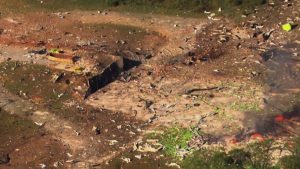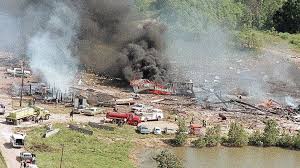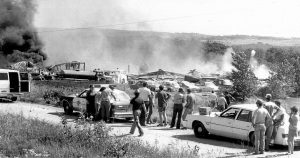
Last week’s explosion that apparently killed 18 workers who remain missing at a Tennessee munitions plant is a reminder of similar explosions that left high death tolls at energy sites around the nation. One tragic blast in Oklahoma killed more than the number in Tennessee.
The New York Times released a list of some of the deadly explosions over the past 55 years and several involved chemical plants, refineries and a fertilizer plant.
-
An explosion at Thiokol Chemical Corporation in Woodbine, Ga., in 1971 killed 29 workers and injured more than 50. The workers mainly made trip flares to be sent for use in the Vietnam War. Trip flares employ wires that are strung across an area that, when tripped upon, send up a flare. A fire on the assembly line sparked ignition pellets, eventually exploding the building.
-
An explosion and fire at Phillips 66 Company, Houston Chemical Complex in 1989 killed 23 workers and injured more than 130 people in Pasadena, Texas. An explosion ignited at the factory, which produced plastic, could be seen from 15 miles away.

-
A sugar plant exploded in Port Wentworth, Ga., in 2008, killing 13 workers and injuring 40. Imperial Sugar, the owner of the plant, was issued a fine of $8.7 million by the Occupational Safety and Health Administration after it was found that safety hazards were ignored for years. The fire, which burned for a week, started after sugar dust sparked and then ignited.
-
Five workers were killed during a cleaning procedure at a Kleen Energy power plant in Middletown, Conn., in 2010. The workers were using pressurized natural gas to clean pipes when the gas ignited and exploded.
-
A West Fertilizer Plant exploded in West, Texas, in 2013, killing 15 people, injuring more than 200 and damaging 350 homes. A fire that investigators later said was intentional caused ammonium nitrate to explode. Several emergency responders were among the dead.
It was not an energy site explosion, but one of the deadliest such blasts in Oklahoma happened on June 25, 1985 at an Aerlex Fireworks plant in the northeast town of Hallett, killing twenty-one and injuring five others. Those five were the only survivors of the blast and the explosion leveled most of the plant, leaving only a few parts of the factory standing.

Fred Rucker, the Oklahoma state fire marshal at the time, concluded the initial explosion might have happened where a pickup truck was parked.
“The initial blast appeared to have been in a smaller building near where the burned-out shell of the truck was found.”
Two workers were unloading ingredients when it occurred but they died in the blast. The ingredients were in a container of highly explosive flash powder. It was a mixture of potassium chloride and powdered aluminum that was being illegally transported in a metal container in the truck.

Investigators believe there was a metal-on-metal friction of the container with the pickup truck bed and a spark touched off the initial explosion. The blast instantly spread throughout the plant and it was so strong, it threw several employees into a nearby pond. The detonations were heard in Oklahoma City and Tulsa and a large mushroom cloud developed over the site.
There were 26 workers in the factory at the time and only five survived including factory owner Richard Alan Johnson and employees Richard Aaron O’Bryant, Butch Osbon, Dan Bridges and Jeff Fountain, mayor of Jennings, Oklahoma. Fountain was critically injured suffering third-degree severe burns over a large portion of his body.[5]

